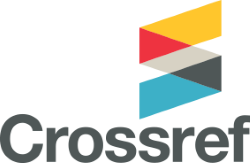Abstract
Penelitian ini merupakan analisis komprehensif terhadap literatur, penelitian, dan sumber daya yang terkait dengan ruang Snoezelen, dengan tujuan menyajikan gambaran mengenai manfaat, praktik terbaik, dan potensi aplikasi dari lingkungan multi-sensorik ini. Tinjauan ini mensintesis dan menganalisis secara kritis informasi yang tersedia untuk berkontribusi pada pemahaman dan implementasi ruang Snoezelen bagi individu dengan kebutuhan beragam. Pencarian sistematis basis data elektronik, termasuk PubMed, PsycINFO, dan CINAHL, bersama dengan pencarian manual pada daftar referensi, mengidentifikasi 27 artikel relevan yang memenuhi kriteria inklusi. Proses seleksi yang ketat memastikan inklusi sumber yang berkualitas tinggi dan relevan. Metode ekstraksi dan sintesis data digunakan untuk mengidentifikasi tema umum, temuan kunci, dan kesenjangan dalam literatur yang ada. Tinjauan menyimpulkan bahwa ruang Snoezelen telah menunjukkan potensi dalam memfasilitasi interaksi positif, mengurangi perilaku maladaptif, meningkatkan perilaku adaptif, dan mendukung tujuan pendidikan, terutama bagi individu dengan gangguan perkembangan dan intelektual. Literatur menekankan pentingnya pendekatan Snoezelen di berbagai setting dan populasi, namun diperlukan penelitian lebih lanjut yang lebih ketat untuk membentuk landasan teoretis yang lebih jelas. Ruang Snoezelen menunjukkan efek positif pada individu dengan gangguan perkembangan, dengan potensi dalam mengurangi perilaku yang mengganggu dan meningkatkan perilaku prososial. Tinjauan ini menekankan perlunya penelitian lebih lanjut yang ketat untuk memvalidasi manfaat terapeutik dan membentuk dasar teoretis yang kuat untuk implementasi ruang Snoezelen.
References
- Lancioni, G E., Cuvo, A J., & O’Reilly, M F. (2002, January 1). Snoezelen: an overview of research with people with developmental disabilities and dementia. https://doi.org/10.1080/09638280110074911
- Lotan, M., & Gold, C. (2009, September 1). Meta-analysis of the effectiveness of individual intervention in the controlled multisensory environment (Snoezelen®) for individuals with intellectual disability. https://doi.org/10.1080/13668250903080106
- Nasser, K., Cahana, C., Kandel, I., Kessel, S., & Merrick, J. (2004, January 1). Snoezelen: Children with Intellectual Disability and Working with the Whole Family. https://doi.org/10.1100/tsw.2004.105Hill K, Choi Y. Neonatal mortality in the developing world. Demographic Research J. 2006;14:429-52.
- Abdullah, F., Kassim, M. H., Awang, A. H., Hussain, M. H., & Razak, M. R. A. (2020). Teachers’ Perspicacity on the Implementation of Snoezelen Room for Emotional Therapy of Autistic Children. February 2021. https://doi.org/10.47696/adved.202054
- Altenmüller-Lewis, U. (2017). Designing Schools for Students on the Spectrum. Design Journal, 20(sup1), S2215–S2229. https://doi.org/10.1080/14606925.2017.1352738
- Bomar, J. L., Becker, R. E., & Green, K. F. (2015). Creating a Multi-Sensory Environment: Where Do We Begin? Journal of Special Education Technology, 30(4), 243–251. https://doi.org/10.1177/0162643415577889
- Chiam, M. (2016, April 18). Stepping Up. The Star. Ehsani Far, H., Nayyeri Fallah, S., & Khalili, A. (2022). Relationship between physical environment and neuropsychological perception in children with Asperger’s disorder. International Journal of Building Pathology and Adaptation. https://doi.org/10.1108/IJBPA-12-2021-0165
- Gaiani, A., Fantoni, D., & Katamadze, S. (2022). Autism and Architecture: The Importance of a Gradual Spatial Transition. Athens Journal of Architecture, 8(2), 175–194. https://doi.org/10.30958/aja.8-2-5
- Ghazali, Md Sakip, & Samsuddin. (2018). A Review of Sensory Design Physical Learning Environment for Autism Centre. E-IPH, AicQoL2018PerhentianIsland, 3(7), 7 pages. https://doi.org/10.21834/e-bpj.v3i7.1262
- Ghazali, R., Sakip, S. R., & Samsuddin, I. (2018). Preliminary Study on Sensory Design for Autism Centre. Environment-Behaviour Proceedings Journal, 3(8), 46–54.
- Manja, S. A., Masnan, A. H., Mustafa, C. C., & Abdullah, M. (2022). Multi-Sensory Activity in Early Childhood Education: Teachers’ Perception on The Importance of Activity Implementation. Jurnal Penyelidikan Sains Sosial (JOSSR), 5(16), 9–17. https://doi.org/10.55573/JOSSR.051602
- McAllister, K., & Sloan, S. (2016). Designed by the pupils, for the pupils: an autism-friendly school. British Journal of Special Education, 43(4), 330–357. https://doi.org/10.1111/1467-8578.12160
- Ncse, ©. (2021). Sensory Spaces in Schools. National Council for Special Education. www.ncse.ie Ortotecsa. (n.d.). Multisensroy Rooms - Snoezelen. www.ortotecsa.com
- Pierce, T. (2022). Sensory Rooms: Increasing Preschool Students’ Focus and Engagement in the Classroom. Northwestern College, Orange City, Iowa.
- Tonetti, A., & Rossetti, M. (2023). Wood Snoezelen. Multisensory Wooden Environments for the Care and Rehabilitation of People with Severe and Very Severe Cognitive Disabilities.
- In E. A. et Al. (Ed.), Urban Book Series: Vol. Part F813 (pp. 1003–1015). Technological Imagination in the Green and Digital Transition. https://doi.org/10.1007/978-3-031-29515-7_89
- Tyndall, J. (2012). Part I. The Glaciers of the Alps, November, xxi–xxii. https://doi.org/10.1017/cbo9781139097048.002
- Abdullah, F., Kassim, M. H., Awang, A. H., Hussain, M. H., & Razak, M. R. A. (2020). Teachers’ Perspicacity on the Implementation of Snoezelen Room for Emotional Therapy of Autistic Children.
- Altenmüller-Lewis, U. (2017). Designing Schools for Students on the Spectrum. Design Journal, 20(sup1), S2215–S2229.
- Ehsani Far, H., Nayyeri Fallah, S., & Khalili, A. (2022). Relationship between physical environment and neuropsychological perception in children with Asperger’s disorder. International Journal of Building Pathology and Adaptation.
- Gaiani, A., Fantoni, D., & Katamadze, S. (2022). Autism and Architecture: The Importance of a Gradual Spatial Transition. Athens Journal of Architecture, 8(2), 175–194.
- Ghazali, Md Sakip, & Samsuddin. (2018). A Review of Sensory Design Physical Learning Environment for Autism Centre. E-IPH, AicQoL2018PerhentianIsland, 3(7), 7 pages.
- Ghazali, R., Sakip, S. R., & Samsuddin, I. (2018). Preliminary Study on Sensory Design for Autism Centre. Environment-Behaviour Proceedings Journal, 3(8), 46–54.
- Hogg, J., Cavet, J., Lambe, L., & Smeddle, M. (2001). The use of “Snoezelen” as multisensory stimulation with people with intellectual disabilities: A review of the research. Research in Developmental Disabilities, 22(5), 353–372.
- Lancioni, G E., Cuvo, A J., & O'Reilly, M F. (2002, January 1). Snoezelen: An overview of research with people with developmental disabilities and dementia.
- Lotan, M., & Gold, C. (2009, September 1). Meta-analysis of the effectiveness of individual intervention in the controlled multisensory environment (Snoezelen®) for individuals with intellectual disability.
- Manja, S. A., Masnan, A. H., Mustafa, C. C., & Abdullah, M. (2022). Multi-Sensory Activity in Early Childhood Education: Teachers’ Perception on The Importance of Activity Implementation. Jurnal Penyelidikan Sains Sosial (JOSSR), 5(16), 9–17.
- McAllister, K., & Sloan, S. (2016). Designed by the pupils, for the pupils: an autism-friendly school. British Journal of Special Education, 43(4), 330–357.
- Nasser, K., Cahana, C., Kandel, I., Kessel, S., & Merrick, J. (2004, January 1). Snoezelen: Children with Intellectual Disability and Working with the Whole Family.
- Practice, M. (2003). The application of a multisensory Snoezelen room for people with learning disabilities —Hong Kong experience. 9(2).
- Schaaf, R. C., Benevides, T., Mailloux, Z., Faller, P., & Hunt, J. (2014). Occupational therapy and sensory integration for children with autism: A feasibility, safety, acceptability, and fidelity study. Autism, 18(6), 712-721.
- Tonetti, A., & Rossetti, M. (2023). Wood Snoezelen. Multisensory Wooden Environments for the Care and Rehabilitation of People with Severe and Very Severe Cognitive Disabilities. In E. A. et Al. (Ed.), Urban Book Series: Vol. Part F813 (pp. 1003–1015). Technological Imagination in the Green and Digital Transition.
- Tyndall, J. (2012). Part I. The Glaciers of the Alps, November, xxi–xxii. Ulrich, D. A. (2000). The test of sensory functions in infants (TSFI): A standardized test of infant sensory and motor performance at term. Pediatric Physical Therapy, 12(1), 7–20.
Recommended Citation
Sahid, Muhammad Hidayat; Pratiwi, Andriani; Masuri, Mohamad Ghazali; and Dahlan, Akehsan
(2024)
"A Comprehensive Scoping Review of Snoezelen Room in Occupational Therapy Best Practices,"
Jurnal Epidemiologi Kesehatan Indonesia: Vol. 8:
Iss.
1, Article 5.
DOI: 10.7454/epidkes.v8i1.1098
Available at:
https://scholarhub.ui.ac.id/epidkes/vol8/iss1/5
Included in
Epidemiology Commons, International and Community Nutrition Commons, Public Health Education and Promotion Commons, Reproductive and Urinary Physiology Commons






